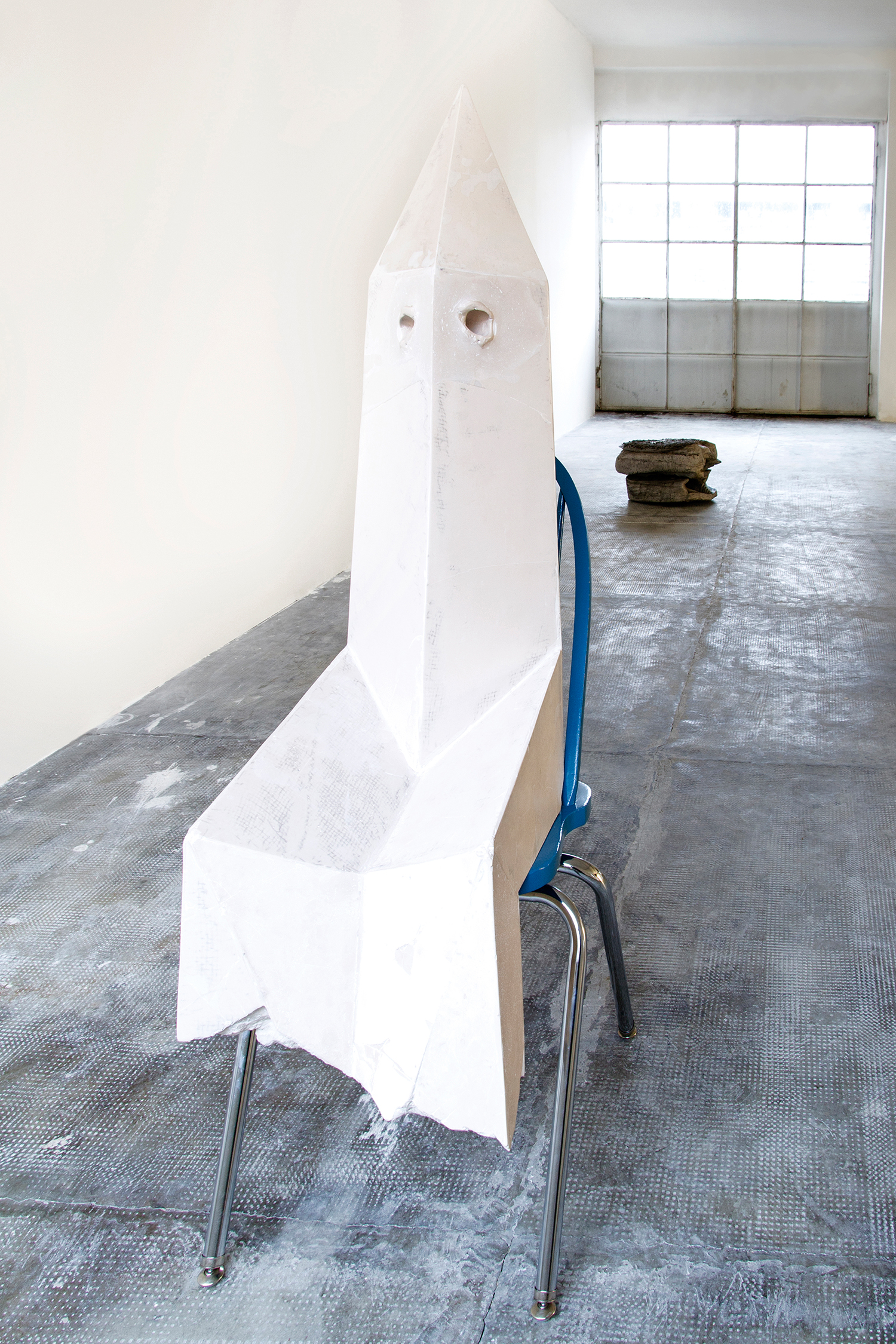Purple Magazine
— S/S 2015 issue 23
Andra Ursuta
 potrait by Jeremy Liebman
potrait by Jeremy Liebman
MAURIZIO CATTELAN’s women artists interview series
in collaboration with MARTA PAPINI
potrait by JEREMY LIEBMAN
All artworks courtesy of Massimo de Carlo and Ramiken Crucible
MAURIZIO CATTELAN — When did you start thinking of yourself as an artist? Is it something you can desire when you’re a child, such as being an astronaut or a dancer?
ANDRA URSUTA — I didn’t know you could be an artist when I was a child. It was not a concept that existed in my environment. I still don’t feel comfortable calling myself one to my face.
MAURIZIO CATTELAN — How would you describe your practice?
ANDRA URSUTA — Hatred followed by self-loathing. Also, a shame spiral.
MAURIZIO CATTELAN — How do you start a work? Opening a new tab, opening a new book, opening a new Skype conversation, or…?
ANDRA URSUTA — I have lots of ideas, and every once in a while one comes along that makes me uncomfortable, one I’d rather not think about. Ideas like that turn into works. I start by doing a Google search of a simple description of my idea, like “flattened body cast covered in cum,” or “tongue floor cleaner,” and take it from there.
MAURIZIO CATTELAN — How do you decide a work is finished?
ANDRA URSUTA — I try to stop when the work is one step away from becoming cheesy or pleasing.
 Broken Obelisk, 2013, aqua, resin and chair
Broken Obelisk, 2013, aqua, resin and chair
MAURIZIO CATTELAN — Is there a piece you regret having created? What is the biggest mistake you could make in your work?
ANDRA URSUTA — I’ve regretted making almost every piece at one point or another, but the artworks I enjoy the most are mistakes, or seem like a bad idea.
MAURIZIO CATTELAN — Do you worry about audience reaction while thinking through a new work?
ANDRA URSUTA — No, it’s very hard for me to imagine other people looking at something I’ve made. That seems completely unreal to me.
MAURIZIO CATTELAN — What do you get from art? What would you like others to get?
ANDRA URSUTA — Something about imagining that you are someone else and making things up as if you were that other person.
MAURIZIO CATTELAN — Is fear involved in your work?
ANDRA URSUTA — Yes. You could say that the fear of death is my life force.
MAURIZIO CATTELAN — Is there any space left for humor?
ANDRA URSUTA — As long as it’s followed by discomfort. Also, humor is impotence repackaged as entertainment and therefore very important.
MAURIZIO CATTELAN — What is your view of contemporary art today? Is contemporary art a panacea for all that ails the world?
ANDRA URSUTA — I don’t have a view of it. I think this is why I try to make it. It’s an anomaly that I don’t understand. Is it a magic wand against the evils in the world? It’s definitely not a magic wand against them.
 NATURAL BORN ARTIST, 2012, concrete , steel and urethane
NATURAL BORN ARTIST, 2012, concrete , steel and urethane
MAURIZIO CATTELAN — What do you think is lacking at the art world’s table? And what is in surplus?
ANDRA URSUTA — The head of Marina Abramovic. For the second question, white people.
MAURIZIO CATTELAN — Do you think the art world is still a masculine world? If yes, what do you think is the right antidote?
ANDRA URSUTA — I believe the art world is still very macho. Unfortunately, I haven’t found a good way of dealing with it other than trying to be even more macho, which is a losing battle.
MAURIZIO CATTELAN — Would you define your work as gender-related?
ANDRA URSUTA — I find that it’s somewhat gender-capped.
MAURIZIO CATTELAN — Does art need any explanation? Isn’t it all about the attention people bring to it?
ANDRA URSUTA — Attention is not the same as meaning. I enjoy explanations, as contemporary art can sometimes make me feel stupid.
MAURIZIO CATTELAN — Is making art an urgent matter for you?
ANDRA URSUTA — I am a compulsive manual worker, and I make artworks with the same urgency that I used to apply to all the day jobs I’ve held in the past.
 Nose Job, 2013, marble and wheel barrow
Nose Job, 2013, marble and wheel barrow
MAURIZIO CATTELAN — Is there a work by another artist that you wish you had made?
ANDRA URSUTA — I really wish I were the maker of the Shroud of Turin.
MAURIZIO CATTELAN — Are you interested in fashion? Is being an artist in the ’10s like being a top model in the ’90s?
ANDRA URSUTA — In an ideal world, we’d all be wearing uniforms. I don’t know enough about the ’90s to answer the rest, because I spent them in Romania.
MAURIZIO CATTELAN — How would you define yourself today?
ANDRA URSUTA — At the moment, I am looking for a socially acceptable way to wear a rubber hijab whenever I leave the house.
MAURIZIO CATTELAN — Where do you see yourself in 10 years?
ANDRA URSUTA — I come from a line of women that die early — so hopefully alive.
MAURIZIO CATTELAN — Have you ever considered quitting?
ANDRA URSUTA — ’90s top models never quit.












































































































































